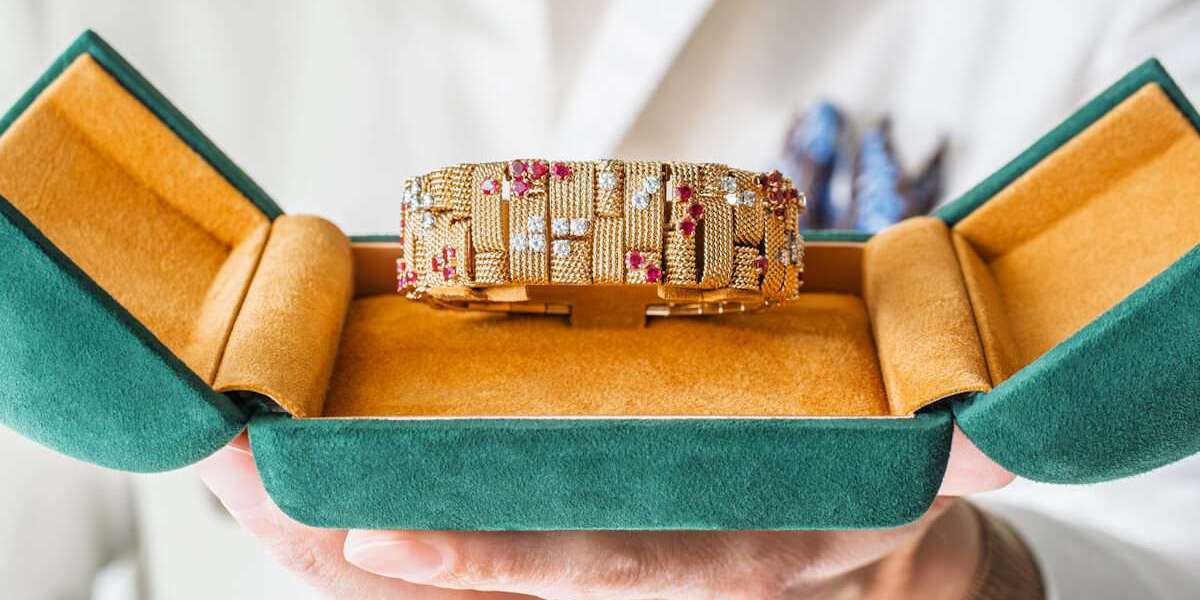The Maker's Mark That Transforms Jewelry Into Art
A maker's mark transforms jewelry from decorative accessory into authenticated work of art, establishing provenance that elevates both market value and cultural significance. These signatures, stamps, and hallmarks serve as permanent documentation of craftsmanship heritage, connecting contemporary collectors with historical artisan traditions and luxury house legacies. The presence of authenticated maker's marks fundamentally alters how jewelry is perceived, valued, and traded in both collector and investment markets.
Signature authentication has become increasingly sophisticated, requiring specialized knowledge to distinguish genuine marks from reproductions or period imitations. Professional evaluation considers mark placement, engraving techniques, metal composition, and historical accuracy to establish authenticity. This authentication process protects collectors while preserving the integrity of signed jewelry markets, ensuring that documented provenance commands appropriate premiums.
Specialist dealers and galleries play crucial roles in maintaining authentication standards and educating collectors about signature recognition. Collections of authenticated signed pieces, such as those available at https://grygorian.com/signed-jewelery/, demonstrate how expert curation and documentation services enhance both the cultural significance and investment potential of maker-marked jewelry for discerning collectors seeking verified heritage pieces.
The Historical Significance of Maker's Marks
Maker's marks originated in medieval guild systems as quality control mechanisms, evolving into sophisticated authentication methods that protect both artisans and consumers. These early hallmarking systems established legal frameworks for precious metal content verification and craftsman accountability, creating foundations for modern luxury jewelry authentication practices.
Historical development of jewelry signatures includes:
- Guild hallmarks (12th-16th centuries): Town marks, maker's marks, and date letters for quality assurance
- Royal assay offices: Government-sanctioned testing and marking systems for precious metals
- House signatures (19th century): Luxury brands began using distinctive marks for brand recognition
- Modern authentication: Serial numbers, laser engravings, and digital documentation systems, such as manufacturer databases or blockchain-based certificates
- Legal protection: Trademark laws preventing signature counterfeiting and brand infringement
The transition from functional identification to luxury branding occurred during the Victorian era, when prestigious jewelry houses recognized that signatures enhanced perceived value and collector appeal. This period established the foundation for contemporary signed jewelry markets, where maker's marks serve dual purposes as authentication tools and value-enhancement mechanisms.
Understanding historical marking practices enables collectors to accurately date pieces, verify authenticity, and appreciate the cultural context surrounding different signature styles and placement methods used by various periods and regions.
Artistic Recognition and Market Valuation
Maker's marks from established luxury houses create immediate market recognition that significantly impacts valuation and collector demand. Signatures from prestigious names like Cartier, Van Cleef & Arpels, and Bulgari command substantial premiums over comparable unsigned pieces, reflecting both artistic heritage and brand prestige in luxury markets.
Market Fact: According to auction data, signed jewelry pieces from major houses typically achieve 100-300% higher prices than equivalent unsigned examples, with rare or discontinued designs commanding even greater premiums depending on brand and condition.
The psychology of signature recognition influences purchasing decisions beyond pure aesthetic appreciation. Collectors derive satisfaction from owning authenticated works by recognized artisans, creating emotional connections that extend market value beyond material worth. This psychological premium explains why certain signatures maintain strong market performance regardless of broader economic conditions.
Expert Insight: Professional appraisers consistently note that signature clarity and authenticity documentation are primary factors in establishing market value, often outweighing minor condition issues when evaluating vintage signed pieces.
Authentication services and signature verification have become specialized fields within the luxury jewelry market. Professional evaluation requires extensive knowledge of house-specific marking practices, historical production methods, and period-appropriate materials to distinguish genuine signatures from sophisticated reproductions that increasingly appear in secondary markets.
Authentication and Documentation in the Modern Market
Modern authentication of signed jewelry requires comprehensive evaluation combining visual examination, technical analysis, and historical documentation verification. Professional authenticators examine signature placement, engraving depth, font consistency, metal composition, and gemstone authenticity through techniques like spectroscopy to establish legitimacy. Advanced techniques include microscopic analysis of tool marks, X-ray fluorescence testing for metal purity, and comparison with documented reference examples from established archives.
Documentation plays an equally critical role in authentication processes. Original purchase receipts, insurance appraisals, and exhibition catalogs provide supporting evidence for signature verification. Reputable auction houses and dealers maintain detailed photographic records of authenticated pieces, creating reference databases that assist in identifying genuine examples and detecting sophisticated reproductions.
The proliferation of high-quality reproductions has intensified authentication requirements in contemporary markets. Sophisticated counterfeits may include artificially aged materials or substituted gemstones, necessitating comprehensive evaluation beyond signature analysis, including gemological and metallurgical testing.
Modern counterfeiters employ laser engraving and chemical aging techniques that can fool casual inspection, making professional evaluation essential for valuable signed pieces. Established authentication services now provide detailed reports including photographic documentation, technical specifications, and historical context to support their conclusions.
Digital technology increasingly supports authentication efforts through blockchain provenance tracking and online verification databases. These systems create permanent records of authenticated pieces, reducing fraud risk and enhancing market confidence for both dealers and collectors investing in high-value signed jewelry.
Investment Perspective: Signatures as Value Anchors
Maker's marks function as investment protection mechanisms, providing authenticity assurance that supports long-term value stability and appreciation potential. Signed pieces from prestigious houses demonstrate consistent market performance across economic cycles when in good condition and properly authenticated, with established signatures serving as quality indicators that attract serious collectors and institutional buyers.
Investment advantages of authenticated signed jewelry include:
- Market liquidity: Recognized signatures ensure easier resale through established dealer networks
- Value verification: Authentication documentation supports insurance and estate valuations
- Rarity premiums: Limited production runs and discontinued lines create scarcity-driven appreciation
- Brand heritage: Established house reputations provide marketing support for secondary sales
- Collector demand: Signature recognition drives consistent buyer interest across international markets
Certain categories of signed jewelry demonstrate exceptional investment performance, particularly pieces from defunct luxury houses, limited collaboration series, and works by celebrated individual artisans. These segments benefit from finite supply conditions that create sustained upward pressure on market values.
Professional investment advisors increasingly recommend signed jewelry as portfolio diversification assets, citing their combination of aesthetic enjoyment and financial appreciation potential. Unlike purely financial instruments, authenticated signed pieces provide tangible satisfaction while serving as stores of value that historically outpace inflation rates in luxury goods markets.
Conclusion
Maker's marks represent the definitive bridge between functional jewelry and collectible art, establishing provenance that transforms market dynamics and cultural significance. The authentication of these signatures requires specialized expertise and comprehensive documentation, but provides investors and collectors with verified heritage pieces that combine aesthetic pleasure with financial security. Professional evaluation and proper documentation ensure that signed jewelry maintains its premium positioning in luxury markets.
The investment potential of authenticated signed pieces continues expanding as collectors recognize the dual benefits of ownership: immediate aesthetic satisfaction and long-term value appreciation. Established signatures from prestigious houses provide market stability while rare or discontinued marks offer exceptional growth potential for knowledgeable collectors who understand authentication requirements and market dynamics.
For discerning investors, signed jewelry represents an optimal intersection of cultural preservation and financial opportunity. The permanent nature of maker's marks ensures that properly authenticated pieces will continue commanding premiums as new generations discover the satisfaction of owning verified works by master craftsmen and prestigious luxury houses.



